
Remove Acne And Skin Blemishes In Photoshop Using The Spot Healing Brush

Learn how to remove acne and other minor skin blemishes from a portrait, leaving healthy looking skin in its place, using the Spot Healing Brush in Photoshop! The Spot Healing Brush can remove or repair all kinds of small imperfections in a photo, but here we'll focus on how to use it to retouch skin.
Why The Spot Healing Brush Is Perfect For Removing Blemishes
Photoshop's Spot Healing Brush is basically a texture replacement tool. It takes damaged or unwanted texture from one area and replaces it with good texture from the surrounding area. The good texture is then blended with the problem area's original tone and color to "heal" the image with seamless results.
The Spot Healing Brush is similar to its big brother, the standard Healing Brush. But while the Healing Brush makes us choose the good texture ourselves, the Spot Healing Brush chooses texture all on its own, and that makes it much faster to use. When retouching skin, we just click on a blemish with the Spot Healing Brush, and like magic, the blemish is gone! Let's see how it works. I'll be using Photoshop CC but this tutorial is fully compatible with Photoshop CS6. You can get the latest Photoshop version here.
To follow along, you can use any image where the person's skin could use some quick retouching. I'll use this photo so we can see how the Spot Healing Brush can be used to quickly remove some distracting pimples from the young woman's face (acne photo from Shutterstock):
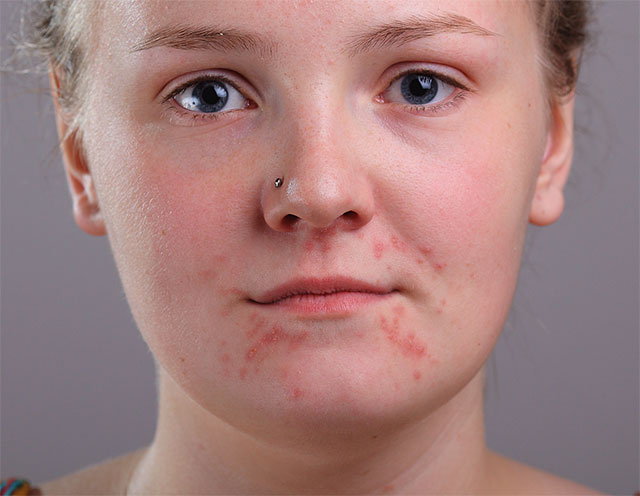
Here's what the same photo will look like after retouching her skin:

This tutorial is part of our Portrait Retouching collection. Let's get started!
How To Remove Skin Blemishes In Photoshop
Step 1: Add A New Blank Layer
With the photo newly-opened in Photoshop, the Layers panel shows the image on the Background layer:
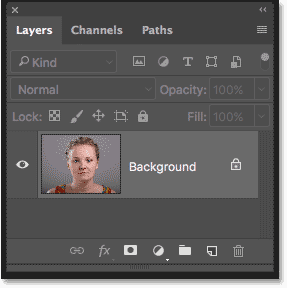
To keep your retouching work separate from the original image, add a new layer above the image by pressing and holding the Alt (Win) / Option (Mac) key on your keyboard and clicking the Add New Layer icon:
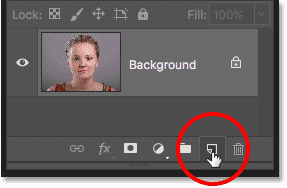
In the New Layer dialog box, name the layer "Spot Healing" and then click OK:
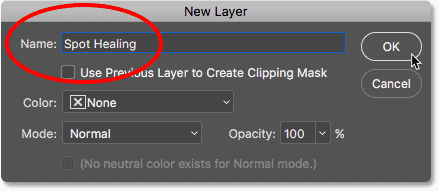
The new "Spot Healing" layer appears above the Background layer:
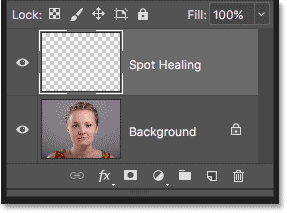
Step 2: Select The Spot Healing Brush
Select the Spot Healing Brush from the Toolbar:

Step 3: Select The "Sample All Layers" Option
With the Spot Healing Brush selected, turn on the Sample All Layers option in the Options Bar. This lets the Spot Healing Brush sample texture not just from the currently-selected layer (the "Spot Healing" layer, which is blank), but also from the image below:

Step 4: Select "Content-Aware"
Still in the Options Bar, make sure Type is set to Content-Aware. This allows Photoshop to make more intelligent decisions when choosing good replacement texture:

Step 5: Click On The Skin Blemishes To Heal Them
Click on pimples and other minor skin blemishes with the Spot Healing Brush to quickly heal them. For best results, keep your brush slightly larger than the blemish. To change your brush size from the keyboard, press the left bracket key ( [ ) to make the brush smaller or the right bracket key ( ] ) to make it larger.
Here, I'm positioning my brush over one of the pimples, and I've resized my brush so that the cursor (the black circular outline) is just a bit larger than the pimple itself:
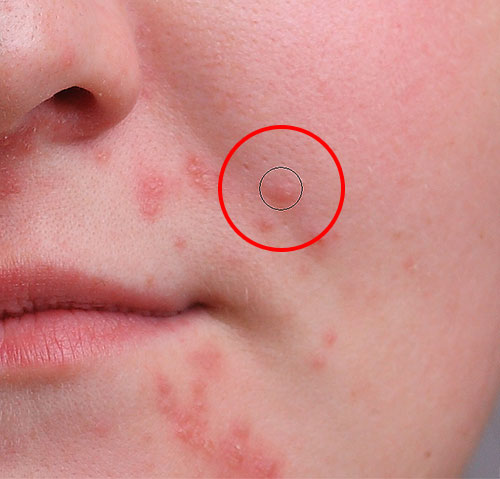
I'll click on the pimple with the Spot Healing Brush, and instantly, it's gone! Photoshop replaced it with good skin texture from the surrounding area:

How To Fix Mistakes
If Photoshop makes a mistake and the blemish isn't gone after the first try, undo your click by pressing Ctrl+Z (Win) / Command+Z (Mac) on your keyboard. Resize your brush if needed, and then click on the same spot to try again. Each time you click, you'll get a different result.
I'll continue clearing up other pimples in the area by moving my brush over them, adjusting its size with the left and right bracket keys, and clicking. Her skin is already looking better:
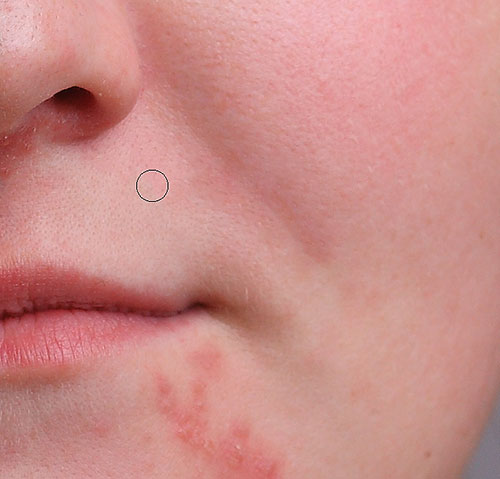
Retouching Larger Areas With The Spot Healing Brush
Let's move down to her chin where we see some larger problems:
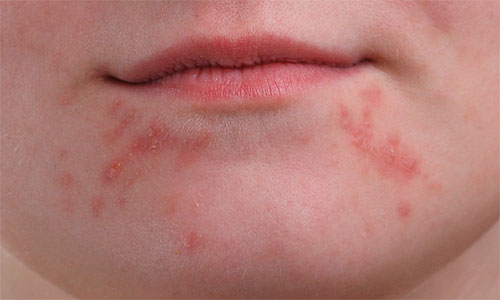
To clear up more difficult areas like this, tackle the easier problems first. I'll start by clicking on the small, isolated pimples with the Spot Healing Brush to heal them and get them out of the way:
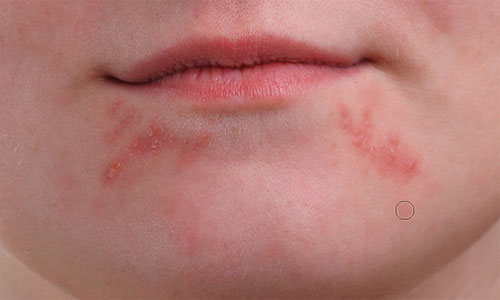
Then, rather than trying to fix a large area all at once with a super wide brush and a single click, approach it in smaller sections, beginning from the outside and making your way inward. Along with clicking, you can also click and drag the Spot Healing Brush in short strokes. As you drag, your brush stroke will appear black:
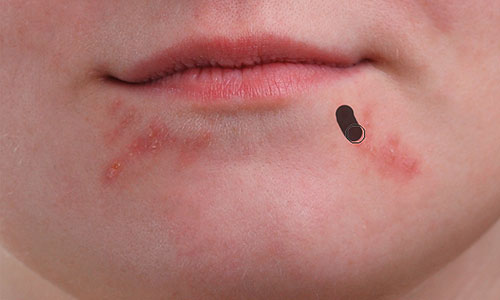
Release your mouse button and Photoshop heals the area with surrounding texture:
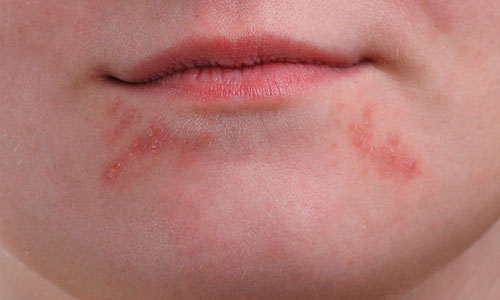
I'll continue clicking and dragging over the area one small section at a time, going back over any problem spots as needed with additional clicks. After a short few minutes worth of effort, the Spot Healing Brush did a pretty good job:
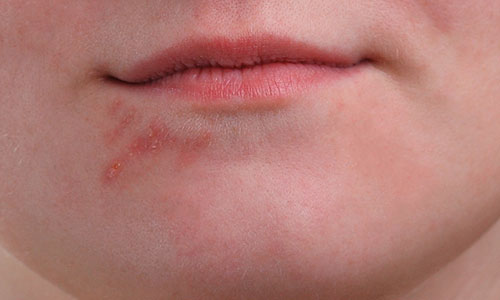
I'll do the same thing for the area on the other side of her chin, using a small brush and a series of clicks and short brush strokes to tackle the area a little at a time. And here's the result:
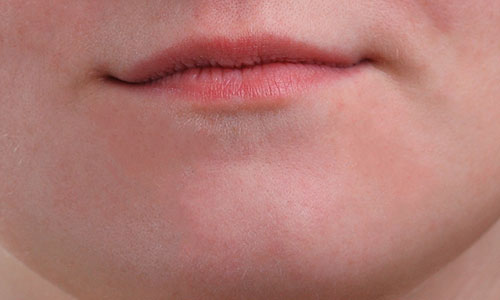
Clearing Up The Remaining Blemishes
There's one cluster of pimples remaining, and it's directly under her nose:
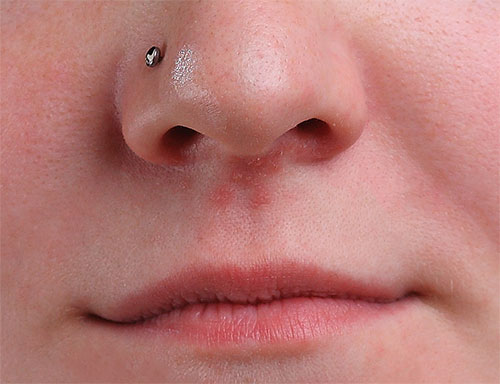
Once again, I'll start by clicking on the smaller, isolated pimples to heal them, keeping my brush just slightly larger than the pimple itself:
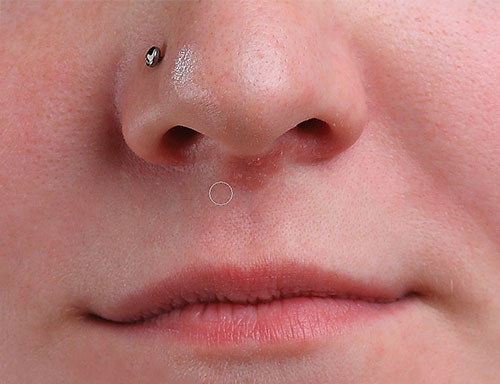
Then I'll use a combination of clicking and dragging with a small brush to heal the remaining area:
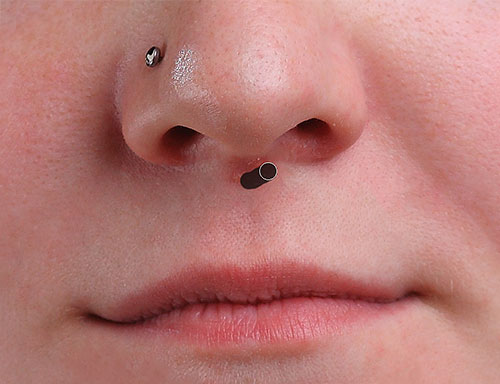
The area is now pimple-free, with healthy skin texture in its place:
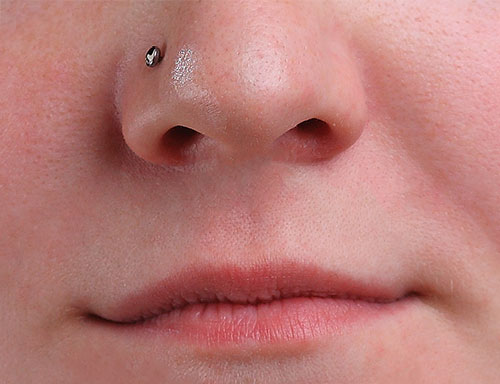
The Spot Healing Brush Blend Modes
When retouching skin with the Spot Healing Brush, you’ll often get better results by changing the blend mode of the brush from Normal (the default setting) to Lighten. The Blend Mode option is found in the Options Bar:

With the blend mode set to Lighten, Photoshop will only replace pixels that are darker than the good texture. Since pimples and other skin blemishes are usually darker than normal skin tone, only the pimple or blemish itself gets replaced, leaving more of the original skin texture surrounding it intact. If a blemish is lighter than the normal skin tone, try the Darken mode instead.
To quickly switch between blend modes for the Spot Healing Brush, press and hold the Shift key on your keyboard and press the + or - keys.
Before And After Comparison
To compare your retouching work with the original image, toggle the "Spot Healing" layer on and off by clicking its visibility icon in the Layers panel:
Click it once to turn the "Spot Healing" layer off and view the original, unedited version:

Click it again to turn the "Spot Healing" layer back on and view your image with the skin blemishes removed:

And there we have it! That's how to remove acne and other minor skin blemishes with the Spot Healing Brush in Photoshop! Now that you know how the Spot Healing Brush works, take your skills to the next level by learning how to smooth skin in a portrait, or how to reduce the appearance of wrinkles! You'll find even more tutorials in our Photo Retouching section!